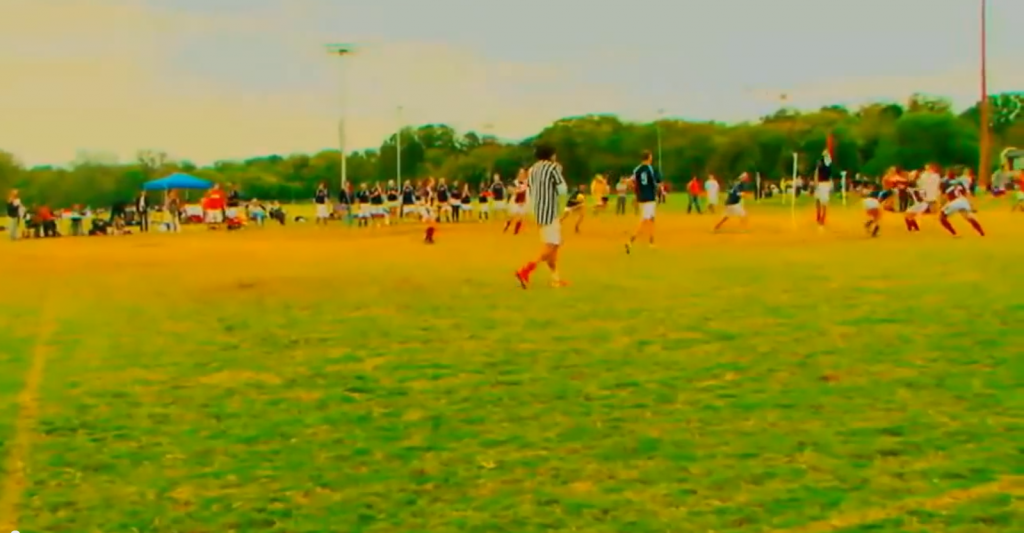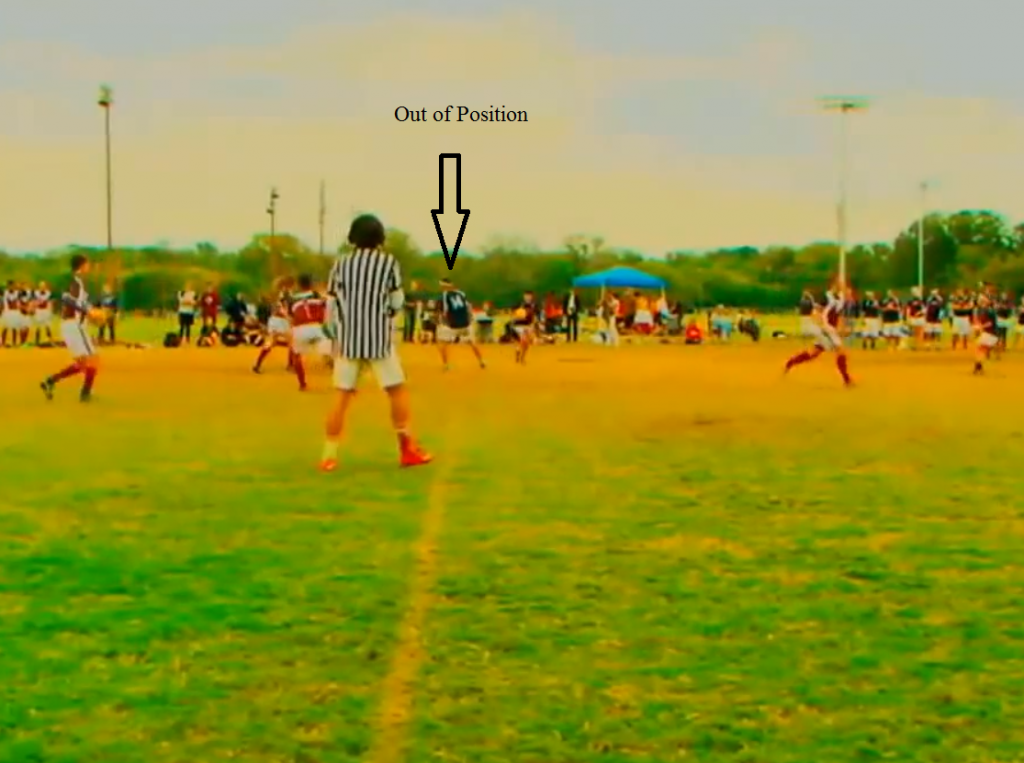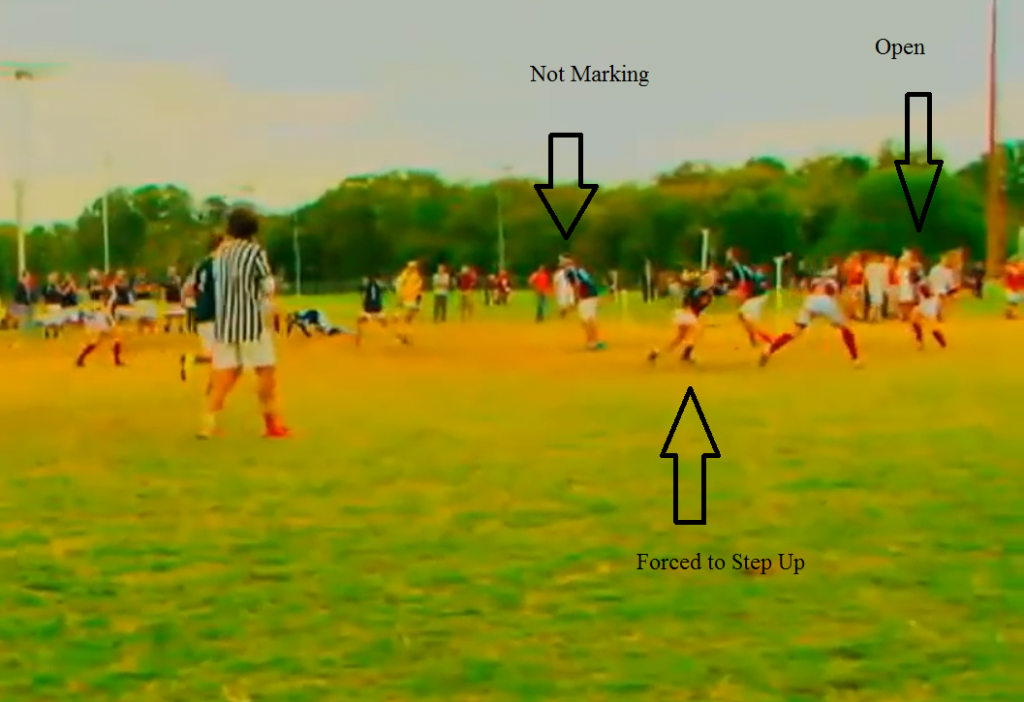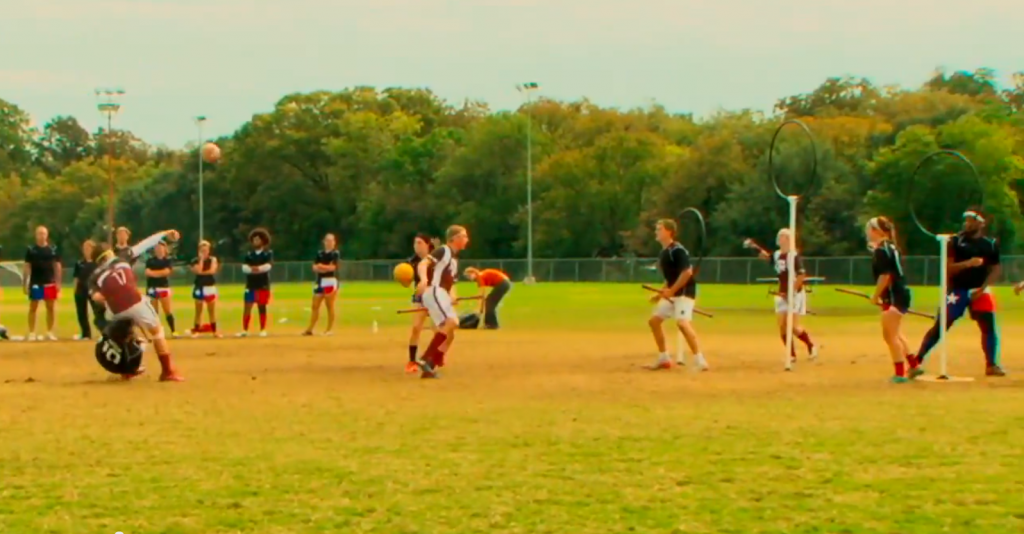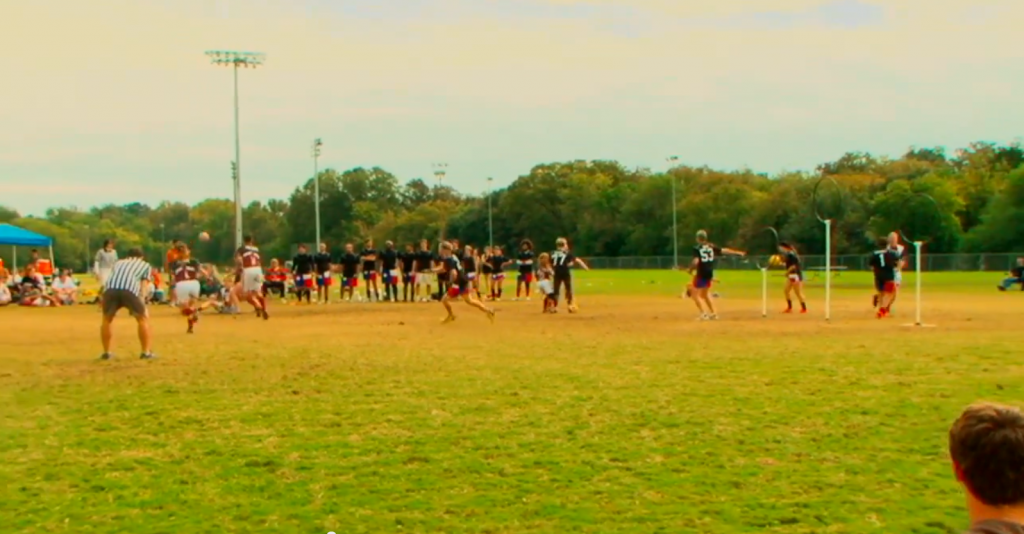- Rule, Britannia, no more?
- Unpopular Opinions: US Quadball Cup 2023
- Proven Contenders: University of Virginia
- Proven Contenders: Rutgers University
- Proven Contenders: University of Michigan
- Proven Contenders: Creighton University
- Different Perspectives: A Look Inside USA Ultimate
- Antwerp QC, Much of Belgian Core, Leaves Competitive Quidditch
Texas A&M’s “Perfect” Offense and the Dangers of an Imperfect Defense
- Updated: January 23, 2014
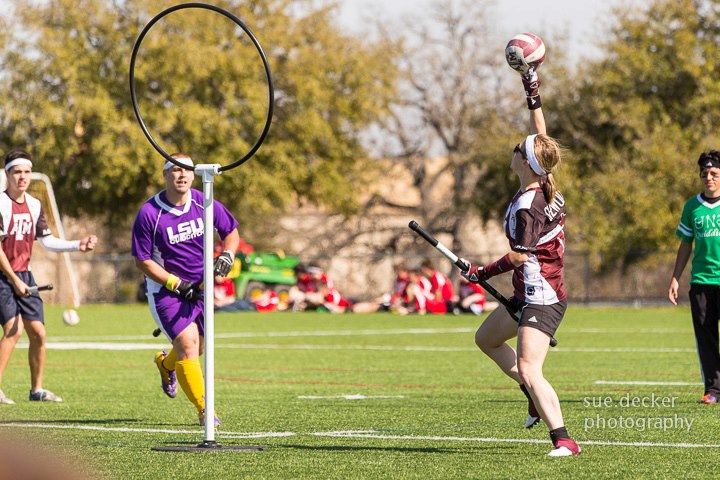
For the second straight season, Texas A&M defined itself as the clear top team in the country over the course of the fall semester. The squad’s perfect 12-0 record includes tournament victories at both the Wolf Pack Classic and the Lone Star Cup, where they defeated No. 3 Lone Star Quidditch Club in the finals of each.
But perhaps the Aggies most impressive win, above even those against Lone Star, was a 160*-60 thrashing of No. 9 UTSA in the quarterfinals of the Lone Star Cup, the largest margin of victory in a matchup of top 10 teams so far this season. Texas A&M scored on each of its first six possessions and never looked back, cruising to a comfortable win that we are lucky enough to have the video for.
The offensive performance was one of the most technically sound since the University of Texas – Austin’s run to the World Cup VI title. Of those first six goals, four were scored on catch and releases next to the hoops, and such plays didn’t slow down from there. The passes weren’t routine by any means either. Look at the precision required in Drew Wasikowski’s pass to Becca DuPont to open the game.
Wasikowski had at most a half-foot window to fit that pass into in order to keep it both over the arm of UTSA keeper Craig Garrison and within the range of DuPont’s jump. Yet, as impressive as that is, such perfect connections between Wasikowski and DuPont have begun to become commonplace. What interests me more is just how wide open DuPont was when receiving the pass in what was a half-court offensive set.
On this play, it’s Hunter Turner (No. 14) of UTSA whose poor positioning and late arrival into the play leads to the defensive breakdown. After losing the brooms-up, Turner stays in the area of Wasikowski and the point defender, No. 4.
By the time he recovers and heads to the hoop, he fails to pick up a man. UTSA’s Sarah Martini adjusts by shifting to one of the Texas A&M males, leaving DuPont all alone behind the hoops.
DuPont is once again all alone on the following play to put in a second consecutive goal, which made me wonder just how often she was over the course of the game. In total, Texas A&M ran 19 plays in a half-court set, and the Aggies’ female chasers went unmarked on 16 of them. That translated into seven passes to them, six of which were caught. Those six were converted into four goals and two assists.
I was prepared to condemn UTSA for their poor coverage of A&M’s elite female chasers, and to do so I went about comparing how the Roadrunners played defense against the Aggies to how Lone Star would later in the tournament. But what I found surprised me.
| Opponent | Possessions | Unmarked | Targets | Touches | Goals | Assists |
|---|---|---|---|---|---|---|
| Lone Star | 15 | 12 | 8 | 7 | 2 | 1 |
| UTSA | 19 | 16 | 7 | 6 | 4 | 2 |
Lone Star made no more of an effort to matchup with A&M’s female chasers, or even shade a bludger towards them, but outside of a couple of breakdowns, did a much better job of shutting them down. While the overall touches are similar, the results of them are much less impressive. The central reason for that is the places these touches took place.
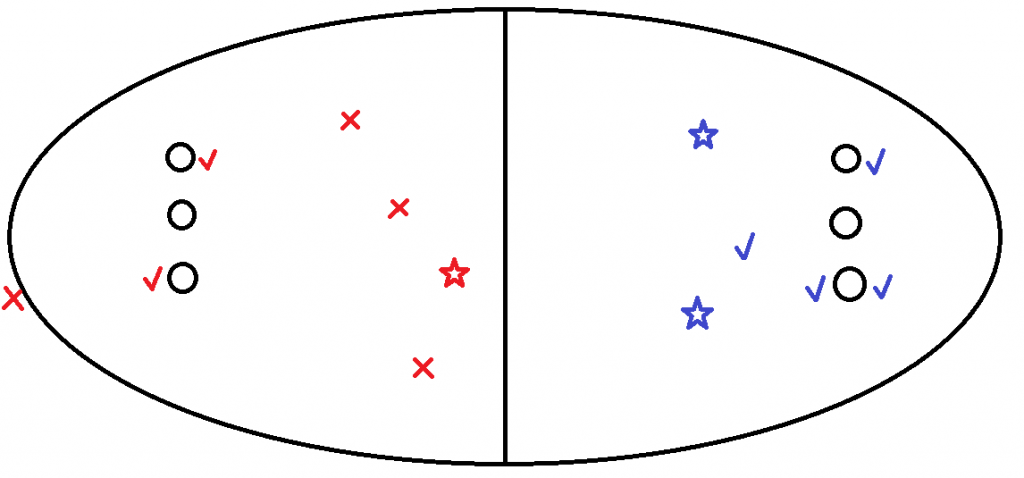
Positions in which Texas A&M female chasers received passes against UTSA (blue) and Lone Star (red). Checks represent goals, stars represent assists, and X’s represent failures to score on the play.
In order for the Aggies’ female chasers to get the ball in their hands, they had to be much further away from the hoops against Lone Star than they did against Roadrunner Quidditch. Outside of the two scoring plays against Lone Star, all of their touches in that game were further from the hoops than any of the six touches against UTSA. From so far away, it was always going to take more than a quick shot or pass to create a goal, and the results bear that out.
The main reason Lone Star was able to restrict the Aggies’ incisive passing was the play of their point defenders. Let’s take a look at A&M’s first attempt at a pass to a female chaser. DuPont is all alone behind the hoops, but while falling backwards, the keeper can’t get enough on the pass to accurately find his teammate.
Similarly, in this play, the point chaser succeeds in taking the Aggie player to ground, forcing the female chaser back to the outskirts of the offensive zone to receive an outlet pass.
On the other hand, against UTSA, A&M’s ball-handlers are consistently in the open, with momentum moving towards the hoops, putting pressure on the defense while giving them an easy passing motion. In these two plays, Wasikowski and Kifer Gregoire are in space and can make the perfect passes needed to breakdown the opposing defense and find the open receiver.
Dealing with A&M’s female chasers wasn’t UTSA’s only issue. In fact, one Aggie player or another was open on almost every play, the result of poor defensive communication that leads me to question the validity of the team’s lofty ranking, one that matters little as it looks like Roadrunner Quidditch may be unable to even field a team in the spring.
The fact that I’m ruling out the nation’s ninth best team as a contender because of their inability to deal with an elite ball-carrier leaves me at an interesting point in analyzing the top tier of teams. To beat a team like Texas A&M, you need to be able to stop the handler, whether with an elite point defender like Lone Star’s Kody Marshall or Boston University’s Michael Powell or a defense that minimizes the ball-carriers impact like Baylor or Emerson. Fail to do so, and any elite team could be the next UTSA on the wrong side of a crushing result.
What teams at the top are the most susceptible? You could make an argument that the No. 2 Lost Boys lack the point defender depth, and that outside of Tony Greco the No. 8 NYDC Capitalists do as well. We’ll get a taste of how the Lost Boys hold up when they travel to Diamond Cup, while we’ll just have to hope the Capitalists get a shot at Boston University during Beantown Brawl, otherwise it may be difficult to get a read on them before World Cup.
Texas A&M is currently the best team in the game, and judging teams by their ability to stop the Aggies’ defense may be harsh. But these are teams vying for a World Cup title, and to be the best, you have to beat the best, which probably means shutting down a few Wasikowski-to-DuPont connections along the way.

